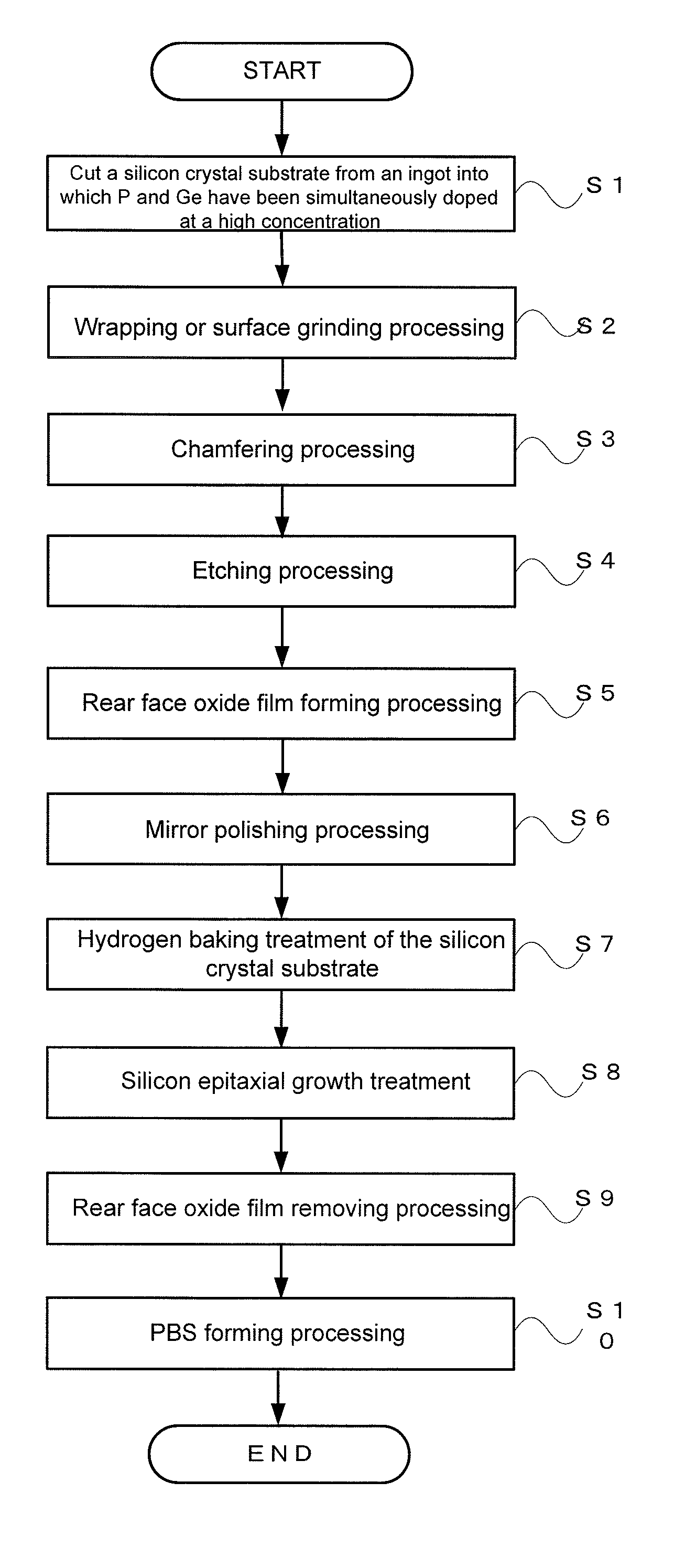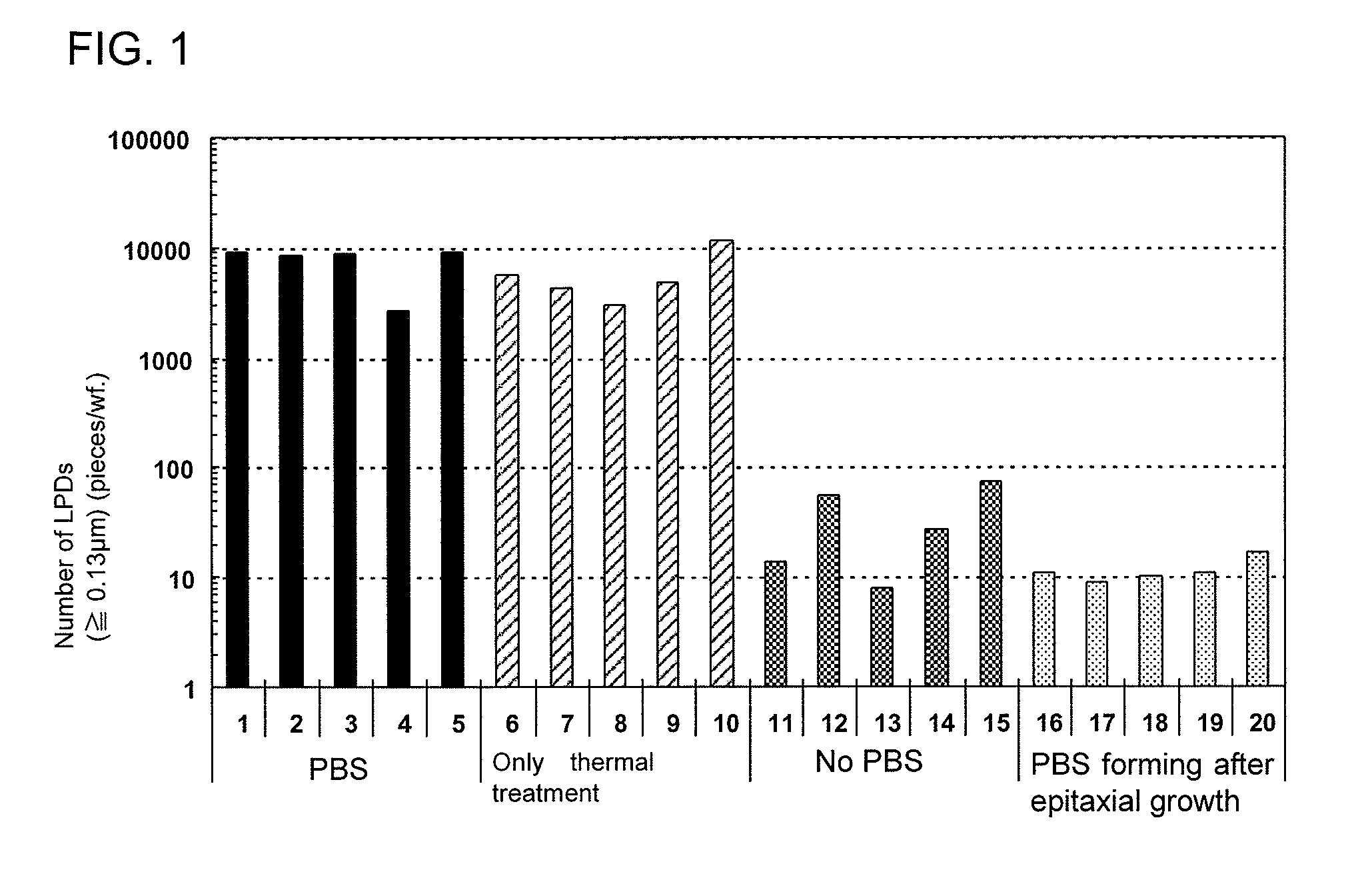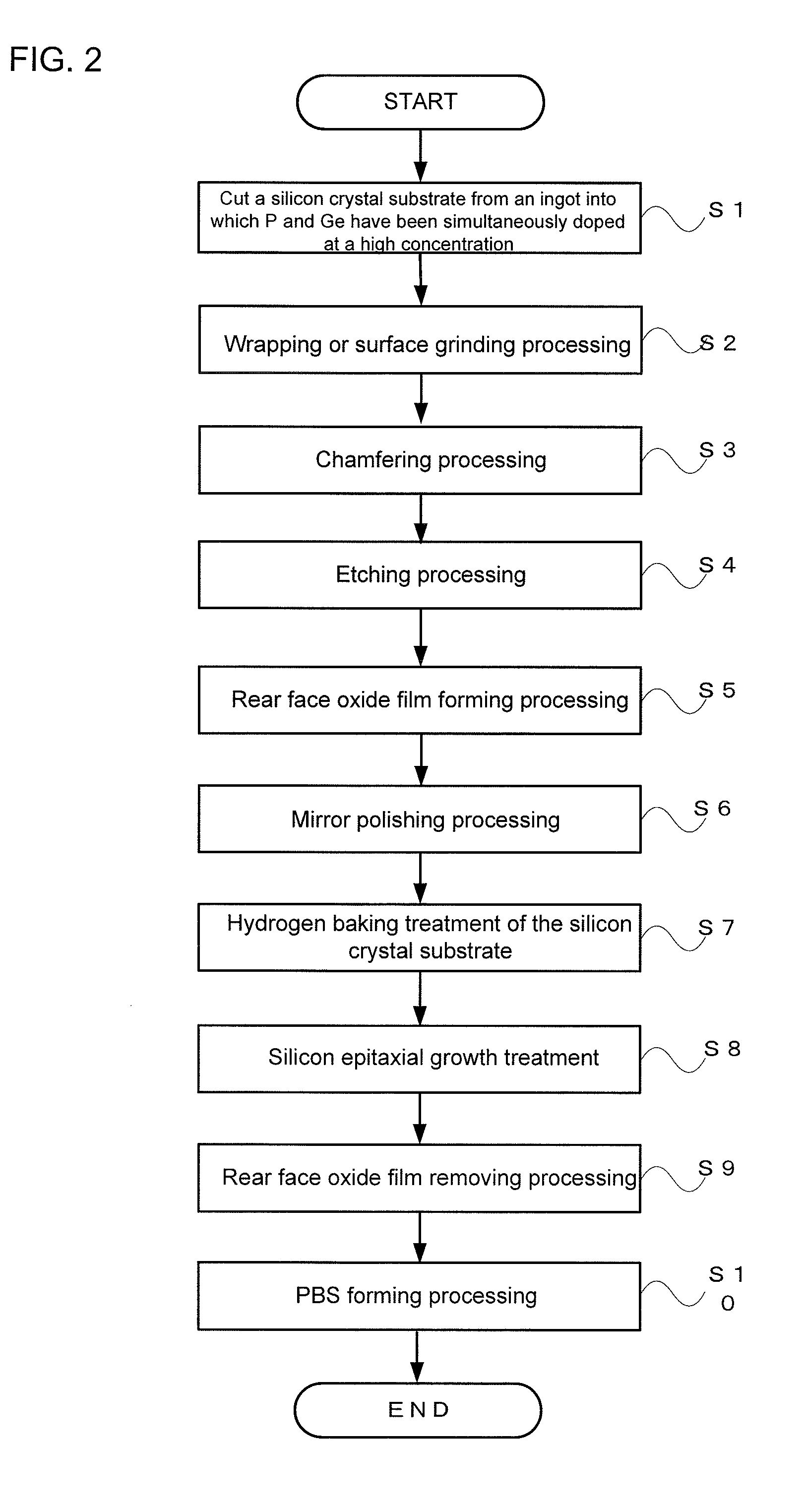Epitaxial silicon wafer and method for manufacturing same
a silicon wafer and epitaxial technology, applied in the direction of coatings, semiconductor devices, chemical vapor deposition coatings, etc., can solve the problems of dislocation defect (a misfit dislocation) caused, difficult to manufacture a silicon crystal substrate with a required degree of resistivity, and difficulty in fully increasing the dopant concentration in a silicon crystal, etc., to achieve the effect of reducing the number of lpds on the surface of the silicon epitaxial layer
- Summary
- Abstract
- Description
- Claims
- Application Information
AI Technical Summary
Benefits of technology
Problems solved by technology
Method used
Image
Examples
Embodiment Construction
[0035]A method for manufacturing an epitaxial silicon wafer in accordance with the present invention will be described below in detail with reference to the drawings.
[0036]For the conventional technique as described above, after a polysilicon layer is formed on the rear face side of a silicon crystal substrate into which phosphorus (P) and germanium (Ge) have been doped in growing a silicon crystal (in particular, phosphorus and germanium have been doped at a high concentration that can implement an extremely low electric resistivity that is required for a power MOS transistor) (after the poly back seal forming treatment (PBS forming treatment) method), a silicon epitaxial layer is grown on the surface of the silicon crystal substrate. In that case, a number of stacking faults (SF) is generated in the silicon epitaxial layer.
[0037]The present inventors have found that an SF that is generated after an epitaxial growth is generated from a minute pit (a minute depressed part) as an ori...
PUM
| Property | Measurement | Unit |
|---|---|---|
| Temperature | aaaaa | aaaaa |
| Area | aaaaa | aaaaa |
| Concentration | aaaaa | aaaaa |
Abstract
Description
Claims
Application Information
 Login to View More
Login to View More - R&D
- Intellectual Property
- Life Sciences
- Materials
- Tech Scout
- Unparalleled Data Quality
- Higher Quality Content
- 60% Fewer Hallucinations
Browse by: Latest US Patents, China's latest patents, Technical Efficacy Thesaurus, Application Domain, Technology Topic, Popular Technical Reports.
© 2025 PatSnap. All rights reserved.Legal|Privacy policy|Modern Slavery Act Transparency Statement|Sitemap|About US| Contact US: help@patsnap.com



